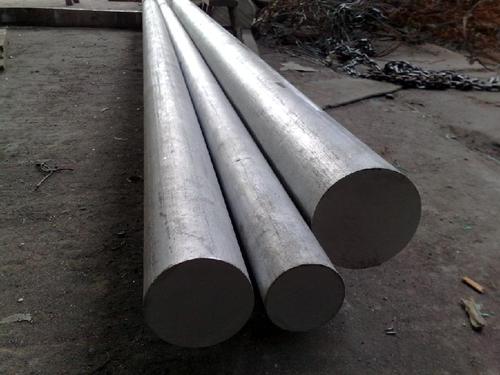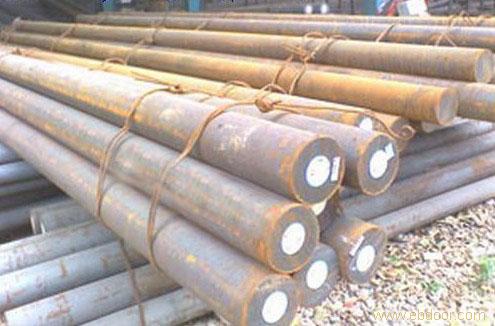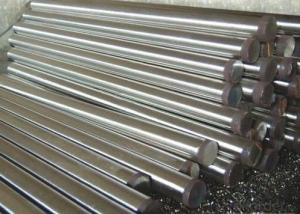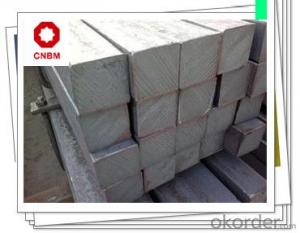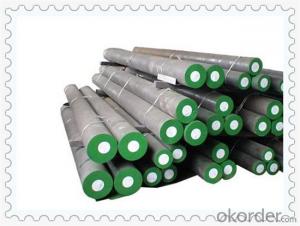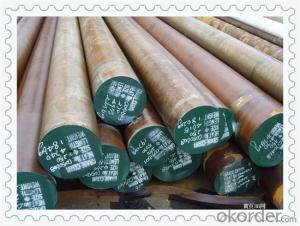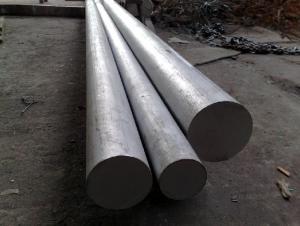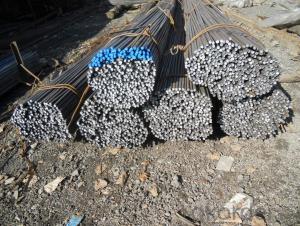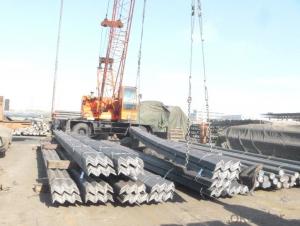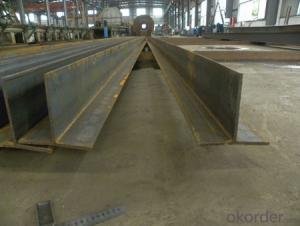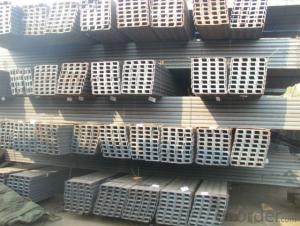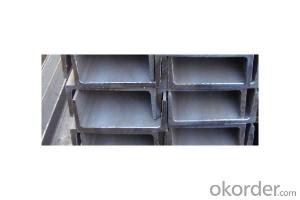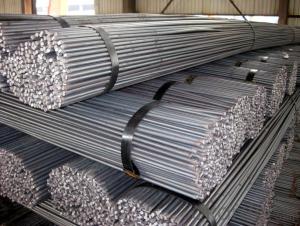Hot rolled round steel
- Loading Port:
- China Main Port
- Payment Terms:
- TT OR LC
- Min Order Qty:
- -
- Supply Capability:
- -
OKorder Service Pledge
OKorder Financial Service
You Might Also Like
TianGangQ345B round steel profile
Q345A (GB/T 1591-1994)/omega % properties and applications: q345 steel is a kind of material. It is a low alloy steel (c < 0.2%), comprehensive performance is good, good low temperature performance, cold stamping performance, good welding performance and cutting performance ° is widely used in pressure vessels, vehicles, ships, buildings, Bridges, etc. Q represents this kind of material yield, behind the 345, is refers to the material yield value, at around 345. And with the increase of the thickness of the material and reduce the yield value. Analogous to the naming of q235 method. Q345a, q345b, q345c q345d, q345e. And this is the distinction between grade, represents the main impact of temperature is different! Q345a, don't do impact; Grade q345b, impact is 20 degrees at room temperature; Grade q345c, impact is 0 degrees; Q345d grade, is 20 degrees - impact; Q345e level, it is - hit 40 degrees. In the impact of different temperature, impact value is also different.
Round steel series
Combination of steel, carbon steel, die steel, bearing steel, tool steel, spring steel, gear steel, cold-drawn round steel, hot rolled round steel, forging round steel.
Round steel material; 15 #, 8 #, 10 #, 20 #, 25 #, 30 #, 35 #, 45 #, 20 cr, cr, 35 to 40 cr, cr, 45 50 cr, mn, 15, 16 mn (q345b), q345c, q345d, q345e, 50 mn, 65 mn, < p > q235b 15 crmo (a3), 20 crmo, 35 crmo, 42 crmo, 5 crmnmo, 38 crmoal, yf45mnv, cr12 < p > cr12mov, gr15, mn2 40, 45 mn2, 60 si2mn crmnti 20, 20 mntib, ml35, t8a, t9a, t10a, t11a < p > t12a, t13a, 3 cr2w8v, 20 crmnmo, 40 crmnmo, 20 crnimo, 27 simn... ..
- Q: Can steel round bars be used for making exhaust systems?
- Yes, steel round bars can be used for making exhaust systems. Steel is a popular material choice for exhaust systems due to its durability, heat resistance, and ability to withstand high temperatures and corrosive environments. Steel round bars can be used to fabricate the pipes, mufflers, and other components of an exhaust system. They can be easily welded and shaped into the desired form, allowing for customization and flexibility in design. Additionally, steel round bars can provide the necessary strength and structural integrity required for an efficient and long-lasting exhaust system.
- Q: How do steel round bars compare to wrought iron bars?
- Steel round bars and wrought iron bars exhibit distinct disparities that distinguish them from each other. To begin with, steel round bars consist of an amalgam of iron and carbon, while wrought iron bars are comprised of pure iron with a low carbon content. This dissimilarity in composition results in contrasting properties. Steel round bars are renowned for their robustness and endurance, rendering them suitable for a wide array of purposes, including construction, manufacturing, and engineering. Conversely, wrought iron bars are pliable and more malleable, enabling them to be easily fashioned and molded into intricate designs. This characteristic renders wrought iron bars popular in decorative applications such as gates, fences, and ornamental pieces. Another distinction lies in their manufacturing processes. Steel round bars are typically manufactured through the process of hot rolling, which encompasses heating the steel billet and passing it through a series of rollers to fashion it into the desired round bar form. In contrast, wrought iron bars are formed via a labor-intensive procedure known as blacksmithing. This involves heating the iron and repeatedly pounding it to eliminate impurities and construct a fibrous structure, thereby resulting in its distinctive grainy appearance. In terms of expenses, steel round bars generally prove to be more economical compared to wrought iron bars. The manufacturing process for steel is more streamlined and efficient, thereby leading to reduced production costs. Conversely, wrought iron bars necessitate more time and labor, rendering them pricier. Finally, concerning corrosion resistance, steel round bars hold an advantage. Steel can be further alloyed with elements such as chromium, nickel, and molybdenum to augment its resistance against rust and corrosion. This renders steel round bars suitable for outdoor applications where they may encounter moisture and harsh environmental conditions. Wrought iron bars, although possessing some level of corrosion resistance, are more susceptible to rusting and require regular maintenance to prevent deterioration. In conclusion, steel round bars and wrought iron bars differ in terms of composition, strength, manufacturing process, cost, and corrosion resistance. The selection between the two relies on the specific requirements of the application, with steel round bars being favored for their strength and affordability, while wrought iron bars are often chosen for their malleability and decorative allure.
- Q: Can steel round bars be used in the production of packaging equipment?
- Yes, steel round bars can be used in the production of packaging equipment. Steel round bars are commonly used in the manufacturing industry due to their high strength and durability. They can be used to construct various components such as shafts, rods, or rollers, which are essential for the proper functioning of packaging equipment. Steel round bars also offer excellent resistance to wear and tear, making them ideal for heavy-duty applications in the packaging industry.
- Q: What is the difference between a rough turned and a polished steel round bar?
- A rough turned steel round bar has undergone a preliminary machining process that removes surface imperfections and excess material, providing a slightly smoother finish. On the other hand, a polished steel round bar has undergone further polishing or grinding processes to achieve a much smoother and aesthetically appealing surface finish.
- Q: How are steel round bars used in the manufacturing of heat exchangers?
- Steel round bars are commonly used in the manufacturing of heat exchangers due to their unique properties that make them suitable for this application. Heat exchangers are devices that transfer heat between two or more fluids, and steel round bars play a crucial role in their construction. One major use of steel round bars in heat exchangers is for the fabrication of the heat exchanger tubes. These tubes are responsible for carrying the fluids that need to be heated or cooled. Steel round bars are often used as the base material for these tubes due to their high strength and excellent heat transfer properties. The round shape of the bars allows for easy fabrication of the tubes, ensuring a tight and secure fit. Additionally, steel round bars are used to construct the headers and tube sheets of heat exchangers. The headers are the component that allows the fluid to enter and exit the heat exchanger, while the tube sheets hold the tubes in place. These components require high strength and durability to withstand the pressure and temperature differentials that occur during heat exchange. Steel round bars provide the necessary strength and stability to ensure the proper functioning of the heat exchanger. Furthermore, steel round bars are also used in the manufacturing of the support structures or frames of heat exchangers. These structures provide stability and support to the heat exchanger components and ensure proper alignment and positioning. Steel round bars offer excellent structural integrity and can withstand heavy loads, making them ideal for this purpose. In conclusion, steel round bars are an integral component in the manufacturing of heat exchangers. Their high strength, excellent heat transfer properties, and durability make them suitable for fabricating the tubes, headers, tube sheets, and support structures of heat exchangers. By utilizing steel round bars, manufacturers can ensure the efficiency, effectiveness, and longevity of heat exchangers in various industries, such as power generation, chemical processing, and HVAC systems.
- Q: Can steel round bars be used in electrical applications?
- Yes, steel round bars can be used in electrical applications. Steel is a highly conductive material, making it suitable for electrical applications such as grounding systems and electrical connections. Steel round bars are often used in the construction of electrical transmission towers, electrical enclosures, and electrical panels. Additionally, steel round bars can also be used for structural support in electrical installations, providing stability and strength to the overall system. However, it is important to ensure that the steel round bars used in electrical applications comply with the necessary electrical safety standards and have appropriate insulation mechanisms in place to prevent any potential electrical hazards.
- Q: How do you prevent steel round bars from rusting during storage?
- To prevent steel round bars from rusting during storage, it is important to keep them in a dry environment with low humidity. Applying a coating of protective oil or wax can also help create a barrier against moisture and prevent rust formation. Additionally, storing the bars off the ground and away from direct contact with concrete or other materials that may cause corrosion can further prevent rusting. Regular inspections and maintenance are crucial to ensure the bars remain rust-free.
- Q: What is the maximum temperature steel round bars can withstand?
- The maximum temperature that steel round bars can withstand varies depending on the specific grade of steel. However, in general, most steel round bars can withstand temperatures up to around 1000 to 1200 degrees Celsius (1832 to 2192 degrees Fahrenheit) without significant loss of structural integrity. It is important to note that prolonged exposure to high temperatures can lead to a reduction in the strength and hardness of the steel, as well as potential dimensional changes and distortion. Additionally, the specific properties and behavior of steel at high temperatures can also be influenced by factors such as alloy composition, heat treatment, and the presence of other elements or impurities. For applications requiring steel round bars to withstand extremely high temperatures beyond the typical range, specialized high-temperature steels, such as heat-resistant or creep-resistant alloys, may be used. These alloys are specifically designed to maintain their mechanical properties and structural integrity at elevated temperatures, often up to several thousand degrees Celsius.
- Q: How do I calculate the length of a steel round bar based on weight?
- In order to determine the length of a steel round bar based on its weight, there are a few factors to consider. Firstly, you must be aware of the density of steel, which typically ranges around 7850 kilograms per cubic meter. However, it's worth noting that this value can vary depending on the specific type and grade of steel being utilized. After obtaining the density value, the next step involves converting the weight of the steel round bar into kilograms if it is initially given in a different unit. For instance, if the weight is provided in pounds, you can multiply it by 0.4536 to convert it into kilograms. Once you have successfully converted the weight into kilograms, you can proceed with using the following formula to calculate the length: Length = Weight / (Density * π * (Diameter/2)^2) It's important to ensure that the diameter is measured in meters. If the diameter is given in a different unit, it must be converted accordingly. Additionally, the symbol "π" represents the mathematical constant pi, which is approximately equal to 3.14159. By substituting the appropriate values into the formula, you will be able to accurately determine the length of the steel round bar. Remember to maintain consistent units throughout the calculation to yield precise results. Please bear in mind that this calculation assumes the round bar possesses a consistent diameter along its entire length. If the bar exhibits varying diameters or irregularities, the resulting length may be an approximation rather than an exact measurement.
- Q: What are the different types of steel used in round bars?
- Round bars are produced using various types of steel. The most common options are as follows: 1. Carbon Steel: This basic steel variant contains a low carbon content (typically less than 1%) and is recognized for its robustness and durability. Carbon steel is often utilized in construction and structural projects. 2. Alloy Steel: By introducing elements like manganese, chromium, or nickel to carbon steel, alloy steel is created. These additives enhance the steel's strength, hardness, and ability to resist corrosion. Machinery and automotive components frequently employ alloy steel round bars. 3. Stainless Steel: Stainless steel is composed of at least 10.5% chromium by mass. This high chromium content grants stainless steel its distinctive properties, including corrosion resistance and a shiny appearance. Stainless steel round bars find wide applications in the food industry, construction, and in environments requiring high corrosion resistance. 4. Tool Steel: Designed to endure high temperatures and resist wear and tear, tool steel is a specialized steel type. It is commonly employed in the production of tools, dies, and in settings necessitating exceptional strength and hardness. 5. Duplex Stainless Steel: This stainless steel variant combines austenite and ferrite phases in its microstructure. As a result, it possesses superior strength and corrosion resistance compared to regular stainless steel. Duplex stainless steel round bars are frequently utilized in marine and chemical industries. In summary, the selection of steel for round bars is contingent upon specific requirements such as strength, corrosion resistance, and temperature resistance, depending on the intended application.
Send your message to us
Hot rolled round steel
- Loading Port:
- China Main Port
- Payment Terms:
- TT OR LC
- Min Order Qty:
- -
- Supply Capability:
- -
OKorder Service Pledge
OKorder Financial Service
Similar products
Hot products
Hot Searches
Related keywords



